With the historic first international space docking mission only six months away, preparations on the ground for the Apollo-Soyuz Test Project (ASTP) intensified. At NASA’s Kennedy Space Center (KSC) in Florida, workers in the Vehicle Assembly Building (VAB) stacked the rocket for the mission, the final Saturn rocket assembled for flight. In the nearby Manned Spacecraft Operations Building (MSOB), the Apollo prime crew of Commander Thomas Stafford, Command Module Pilot Vance Brand, and Docking Module Pilot Donald “Deke” Slayton, and their backups Alan Bean, Ronald Evans, and Jack Lousma conducted vacuum chamber tests of the Command Module (CM), the final Apollo spacecraft prepared for flight.
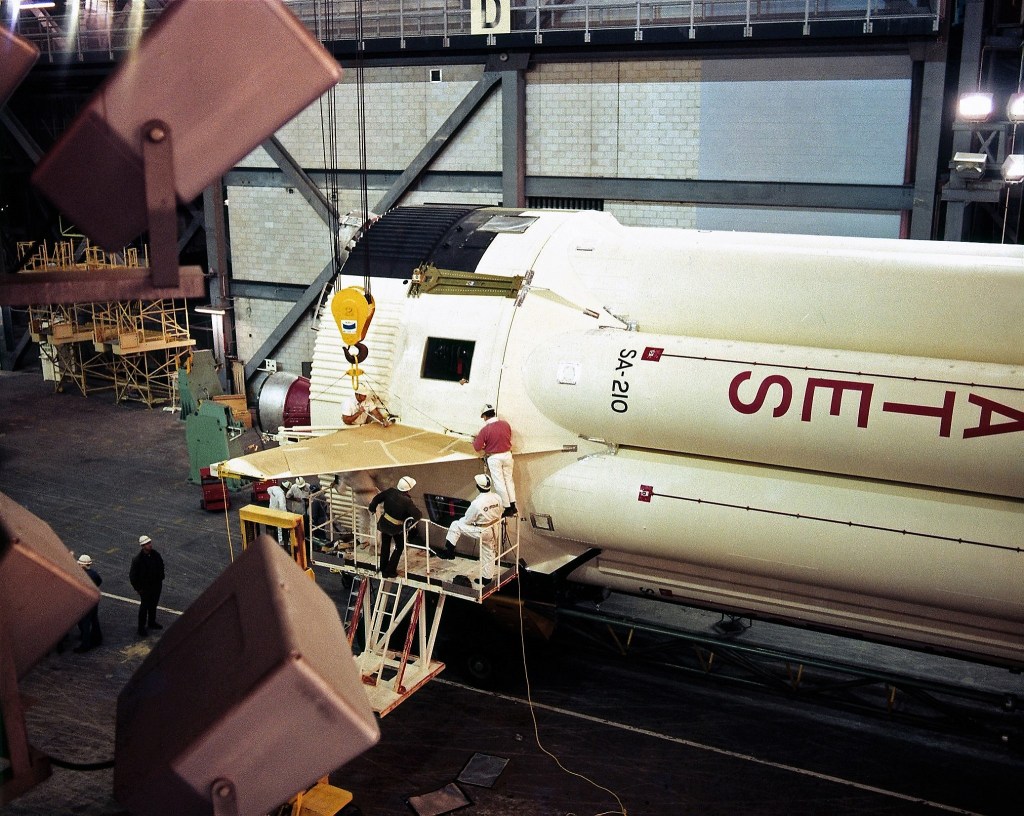 Inside the Vehicle Assembly Building (VAB) at NASA’s Kennedy Space Center in Florida, workers attach fins to the Saturn IB’s first stage.
Inside the Vehicle Assembly Building (VAB) at NASA’s Kennedy Space Center in Florida, workers attach fins to the Saturn IB’s first stage. 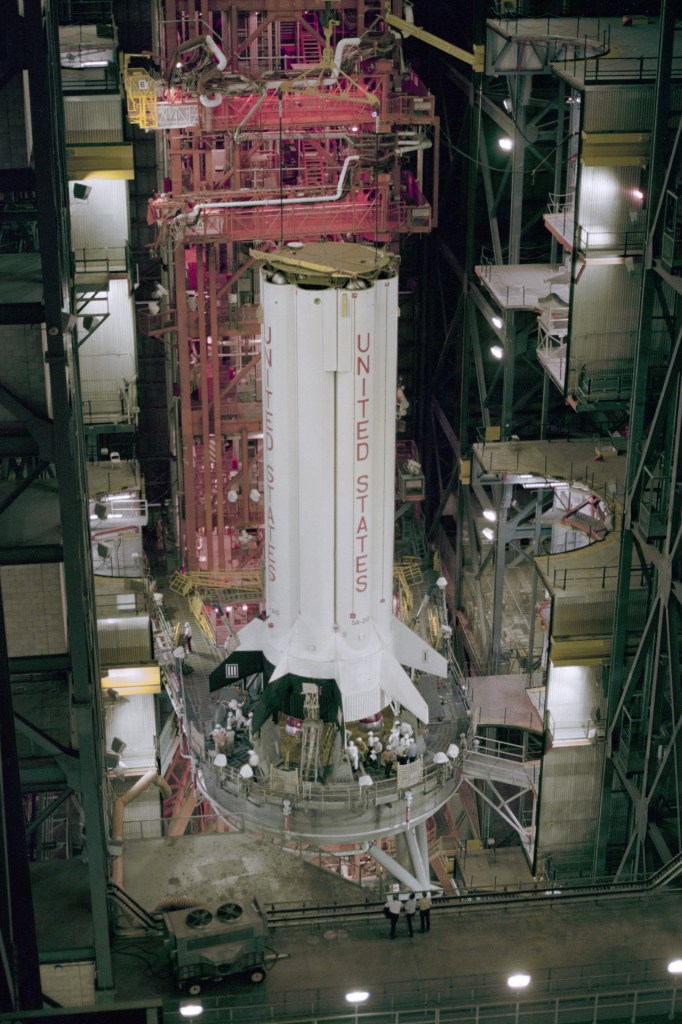 In the VAB, workers secure the first stage of the Saturn IB rocket onto the milk stool, perched on Mobile Launcher-1.
In the VAB, workers secure the first stage of the Saturn IB rocket onto the milk stool, perched on Mobile Launcher-1.  Workers lift the second stage of the Saturn IB rocket prior to mating with the first stage.
Workers lift the second stage of the Saturn IB rocket prior to mating with the first stage. 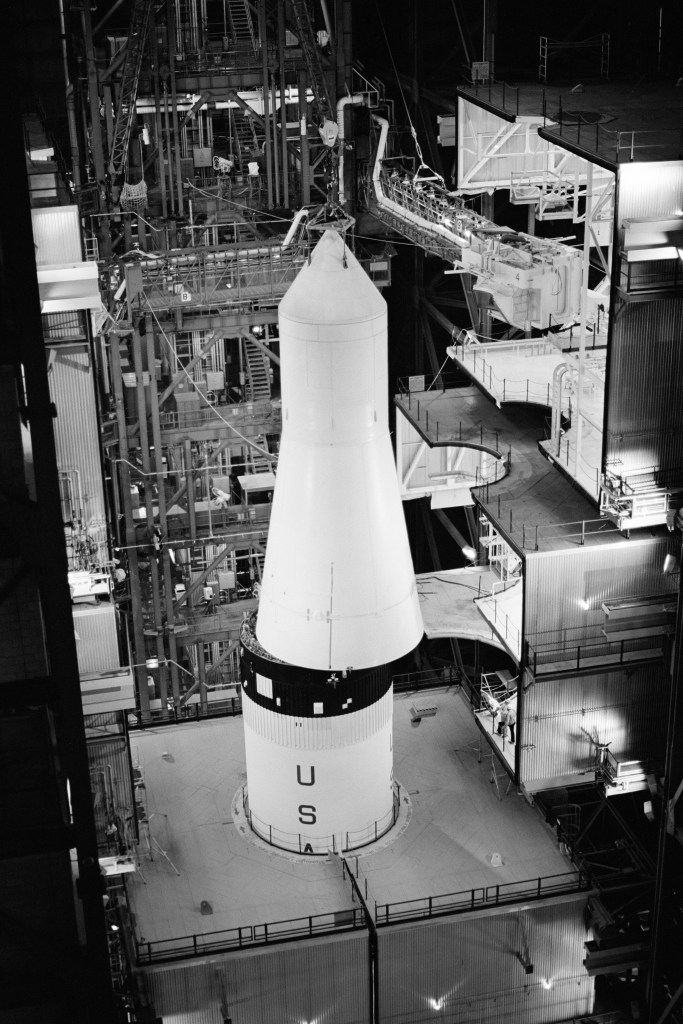 Workers lower a boilerplate Apollo spacecraft onto the Saturn IB rocket. The Saturn IB rocket, serial number SA-210, used for ASTP had a lengthy history. Contractors originally built its two stages in 1967, at a time when NASA planned many more Saturn IB flights to test Apollo spacecraft components in Earth orbit in preparation for the Moon landing. By 1968, however, after four uncrewed Saturn IB launches, only one launched a crew, Apollo 7. Four more Saturn IBs remained on reserve to launch crews as part of the Apollo Applications Program, renamed Skylab in 1970. Without an immediate mission, the two stages of SA-210 entered long-term storage in 1967. Workers later modified and refurbished the stages for ASTP before shipping them to KSC. The first stage arrived in April 1974 and the second stage in November 1972.
Workers lower a boilerplate Apollo spacecraft onto the Saturn IB rocket. The Saturn IB rocket, serial number SA-210, used for ASTP had a lengthy history. Contractors originally built its two stages in 1967, at a time when NASA planned many more Saturn IB flights to test Apollo spacecraft components in Earth orbit in preparation for the Moon landing. By 1968, however, after four uncrewed Saturn IB launches, only one launched a crew, Apollo 7. Four more Saturn IBs remained on reserve to launch crews as part of the Apollo Applications Program, renamed Skylab in 1970. Without an immediate mission, the two stages of SA-210 entered long-term storage in 1967. Workers later modified and refurbished the stages for ASTP before shipping them to KSC. The first stage arrived in April 1974 and the second stage in November 1972.
On Jan. 13, 1975, inside the cavernous VAB, workers stacked the Saturn IB rocket’s first stage onto Mobile Launcher-1 (ML-1), modified from its use to launch Saturn V rockets during the Apollo program with the addition of the milk stool pedestal. The milk stool, a 128-foot tall platform, allowed the Saturn IB to use the same Launch Umbilical Tower as the much larger Saturn V rocket at Launch Complex 39. The next day, workers lowered the second stage onto the first, followed by the Instrument Unit two days later. Finally, on Jan. 17 workers topped off the rocket with a boilerplate Apollo spacecraft while engineers continued testing the flight article in the MSOB.
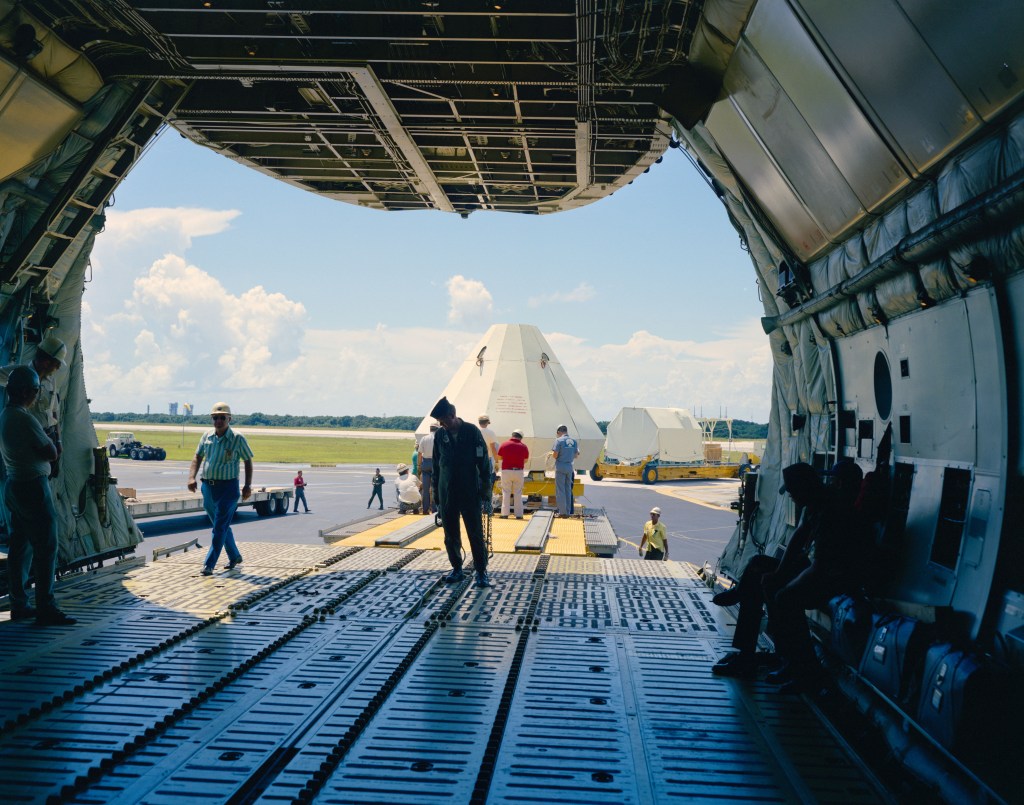 The ASTP Apollo Command and Service Modules arrive at NASA’s Kennedy Space Center (KSC) in Florida.
The ASTP Apollo Command and Service Modules arrive at NASA’s Kennedy Space Center (KSC) in Florida.  The ASTP Command Module arrives in KSC’s Manned Spacecraft Operations Building. The Command and Service Modules – CSM-111 – arrived at KSC from the Rockwell International plant in Downey, California, on Sept. 8, 1974, by C-5A Galaxy cargo plane. Rockwell had finished building the spacecraft in March 1970 and placed it in storage until July 1972. Modifications for ASTP took place between August 1972 and August 1974, following which Rockwell shipped the spacecraft to KSC. The sign on the shipping container bore the legend “From A to Soyuz – Apollo/Soyuz – Last and the Best.” Workers at KSC towed the modules to the MSOB for inspection and checkout, joined the two modules, and placed the combined spacecraft into a vacuum chamber.
The ASTP Command Module arrives in KSC’s Manned Spacecraft Operations Building. The Command and Service Modules – CSM-111 – arrived at KSC from the Rockwell International plant in Downey, California, on Sept. 8, 1974, by C-5A Galaxy cargo plane. Rockwell had finished building the spacecraft in March 1970 and placed it in storage until July 1972. Modifications for ASTP took place between August 1972 and August 1974, following which Rockwell shipped the spacecraft to KSC. The sign on the shipping container bore the legend “From A to Soyuz – Apollo/Soyuz – Last and the Best.” Workers at KSC towed the modules to the MSOB for inspection and checkout, joined the two modules, and placed the combined spacecraft into a vacuum chamber.
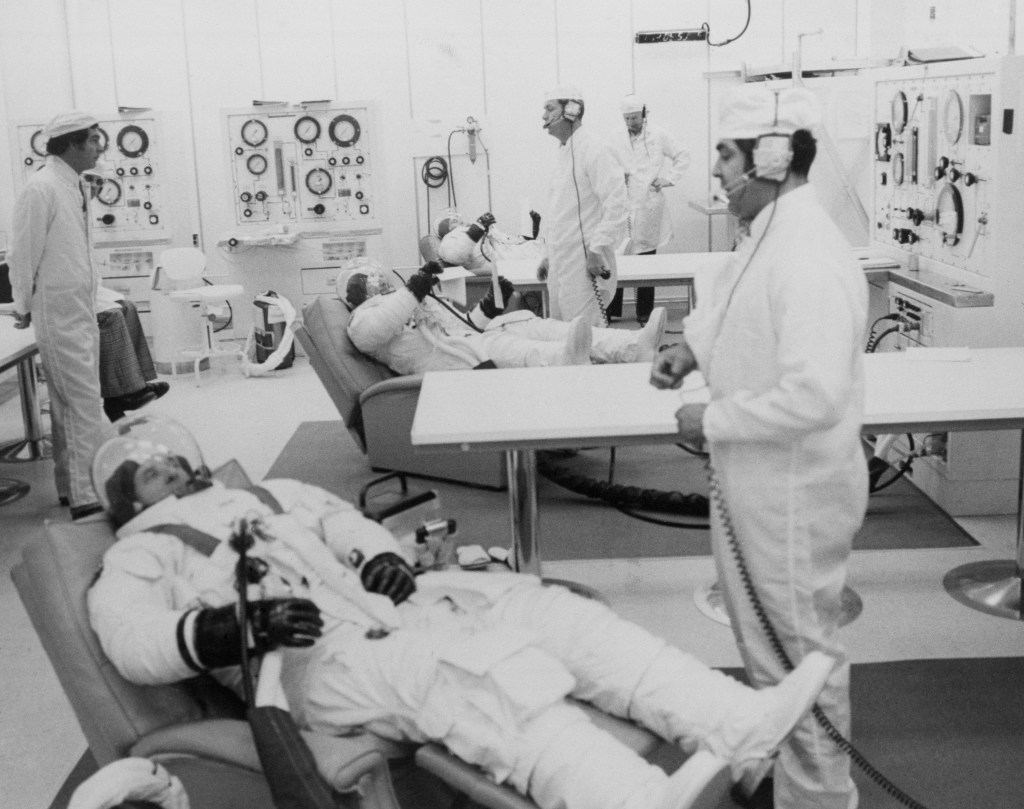 The prime Apollo crew of Thomas Stafford, left, Vance Brand, and Donald “Deke” Slayton suit up in preparation for an altitude chamber test in the Command Module (CM).
The prime Apollo crew of Thomas Stafford, left, Vance Brand, and Donald “Deke” Slayton suit up in preparation for an altitude chamber test in the Command Module (CM).  The astronauts inside the CM in the altitude chamber. In the MSOB, the prime and backup ASTP crews conducted tests of their spacecraft in an altitude chamber. After both crews completed simulated runs in December 1974, the prime crew of Stafford, Brand, and Slayton suited up, entered the CM inside the chamber, closed the hatch, and conducted an actual test on Jan. 14, with the chamber simulating altitudes of up to 220,000 feet. Two days later, the backup crew of Bean, Evans, and Lousma completed a similar test.
The astronauts inside the CM in the altitude chamber. In the MSOB, the prime and backup ASTP crews conducted tests of their spacecraft in an altitude chamber. After both crews completed simulated runs in December 1974, the prime crew of Stafford, Brand, and Slayton suited up, entered the CM inside the chamber, closed the hatch, and conducted an actual test on Jan. 14, with the chamber simulating altitudes of up to 220,000 feet. Two days later, the backup crew of Bean, Evans, and Lousma completed a similar test.
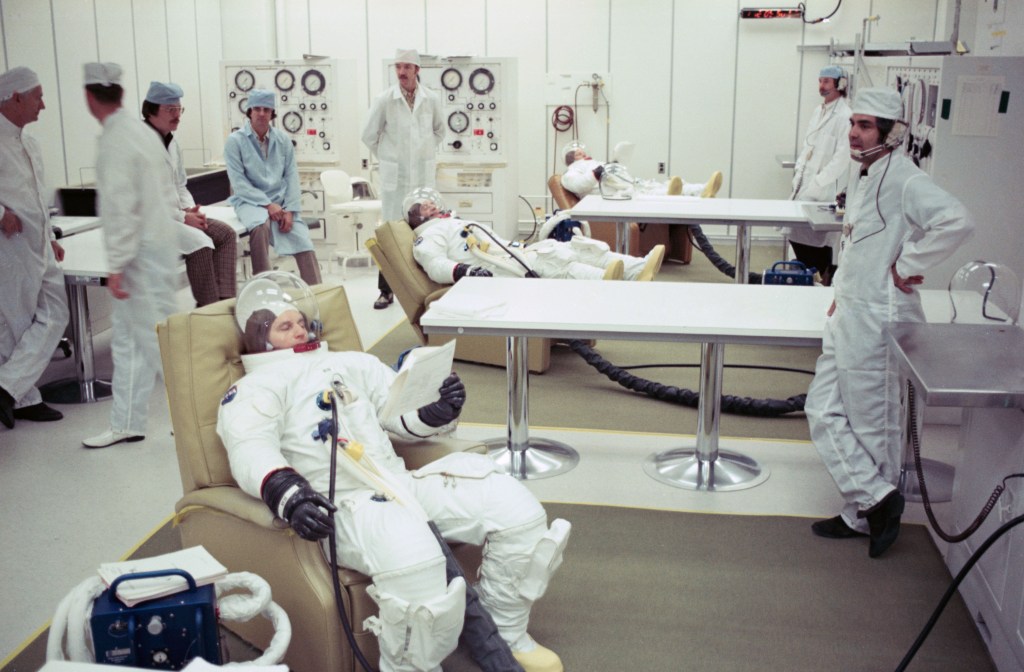 The backup Apollo crew of Alan Bean, left, Ronald Evans, and Jack Lousma suit up in preparation for an altitude chamber test in the Command Module (CM).
The backup Apollo crew of Alan Bean, left, Ronald Evans, and Jack Lousma suit up in preparation for an altitude chamber test in the Command Module (CM). 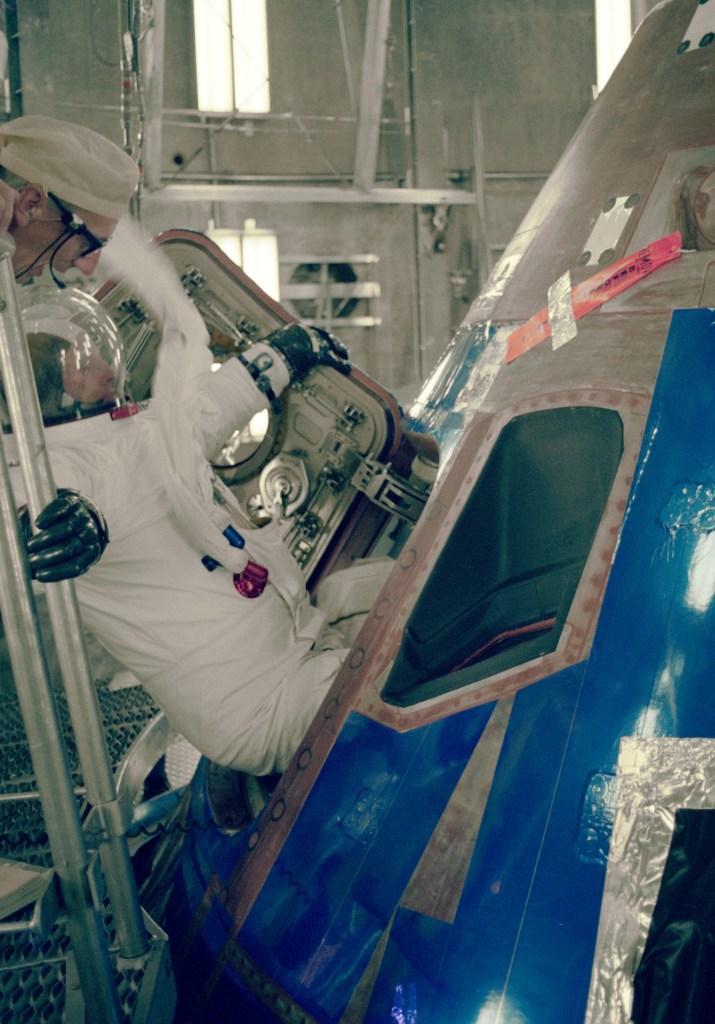 Workers assist backup crewmember Lousma into the CM. To solve the problem of the Apollo and Soyuz spacecraft operating at different atmospheric pressures and compositions and using incompatible docking mechanisms, engineers designed a Docking Module (DM) that acted as both an airlock and a transfer tunnel and a Docking System (DS) that allowed the two nations’ spacecraft to physically join in space. NASA contracted with Rockwell International to build the DM. Engineers equipped one end of the DM with the standard Apollo probe-and-drogue docking mechanism and the other end with the androgynous system that linked up with its opposite half installed on the modified Soyuz spacecraft. During launch, the DM rested inside the Spacecraft Lunar Module (LM) Adaptor (SLA) atop the rocket’s upper stage, much like the LM during Apollo flights. Once in orbit, the astronauts separated the CSM from the upper stage, turned the spacecraft around, docked with the DM and pulled it free.
Workers assist backup crewmember Lousma into the CM. To solve the problem of the Apollo and Soyuz spacecraft operating at different atmospheric pressures and compositions and using incompatible docking mechanisms, engineers designed a Docking Module (DM) that acted as both an airlock and a transfer tunnel and a Docking System (DS) that allowed the two nations’ spacecraft to physically join in space. NASA contracted with Rockwell International to build the DM. Engineers equipped one end of the DM with the standard Apollo probe-and-drogue docking mechanism and the other end with the androgynous system that linked up with its opposite half installed on the modified Soyuz spacecraft. During launch, the DM rested inside the Spacecraft Lunar Module (LM) Adaptor (SLA) atop the rocket’s upper stage, much like the LM during Apollo flights. Once in orbit, the astronauts separated the CSM from the upper stage, turned the spacecraft around, docked with the DM and pulled it free.
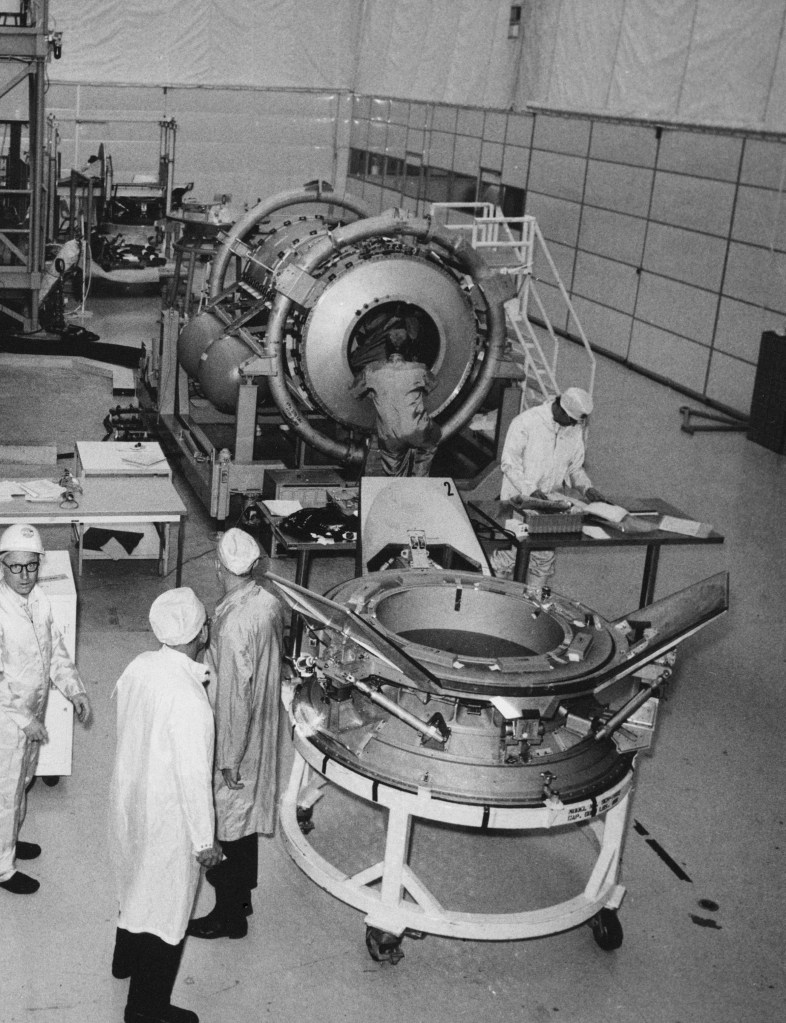 Workers lower the DM into Chamber B in the Space Environment Simulation Laboratory at NASA’s Johnson Space Center in Houston.
Workers lower the DM into Chamber B in the Space Environment Simulation Laboratory at NASA’s Johnson Space Center in Houston. 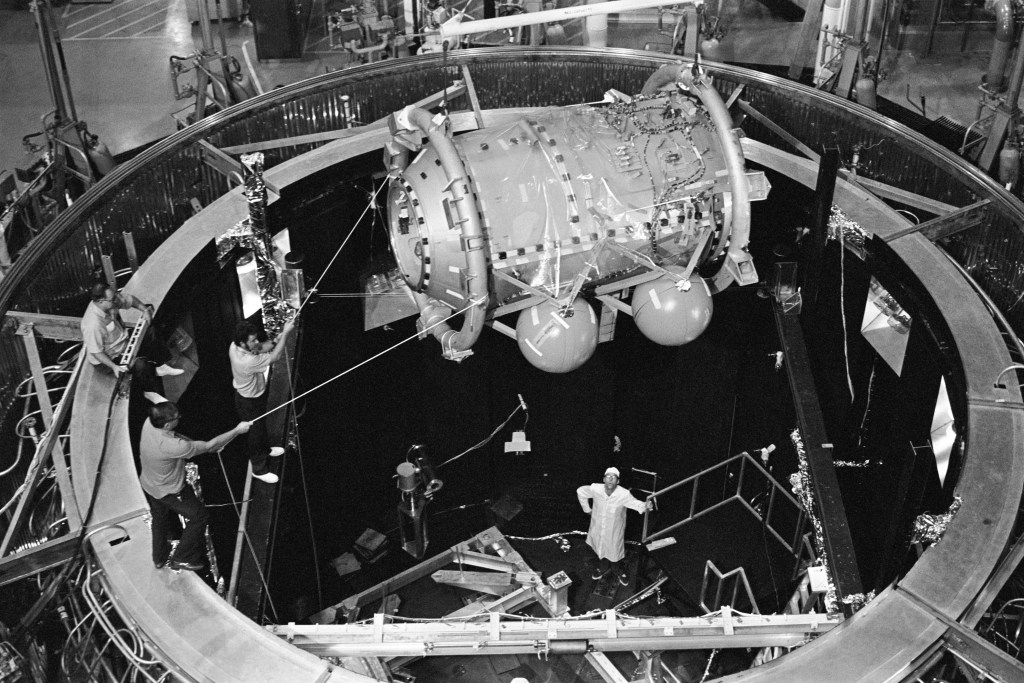 Workers lower the DM into Chamber B in the Space Environment Simulation Laboratory at NASA’s Johnson Space Center in Houston. After extensive vacuum testing in Chamber B of the Space Environment Simulation Laboratory at NASA’s Johnson Space Center in Houston, the flight DM arrived at KSC on Oct. 29, 1974, and workers prepared it for more testing in a vacuum chamber in the MSOB. The flight DS arrived at KSC on Jan. 3, 1975, and two weeks later workers installed it on the DM. On Jan. 27, engineers lowered the DM onto the CM in the altitude chamber to conduct a mechanical docking test. Engineers conducted 10 days of joint tests of television and audio equipment to ensure systems compatibility.
Workers lower the DM into Chamber B in the Space Environment Simulation Laboratory at NASA’s Johnson Space Center in Houston. After extensive vacuum testing in Chamber B of the Space Environment Simulation Laboratory at NASA’s Johnson Space Center in Houston, the flight DM arrived at KSC on Oct. 29, 1974, and workers prepared it for more testing in a vacuum chamber in the MSOB. The flight DS arrived at KSC on Jan. 3, 1975, and two weeks later workers installed it on the DM. On Jan. 27, engineers lowered the DM onto the CM in the altitude chamber to conduct a mechanical docking test. Engineers conducted 10 days of joint tests of television and audio equipment to ensure systems compatibility.
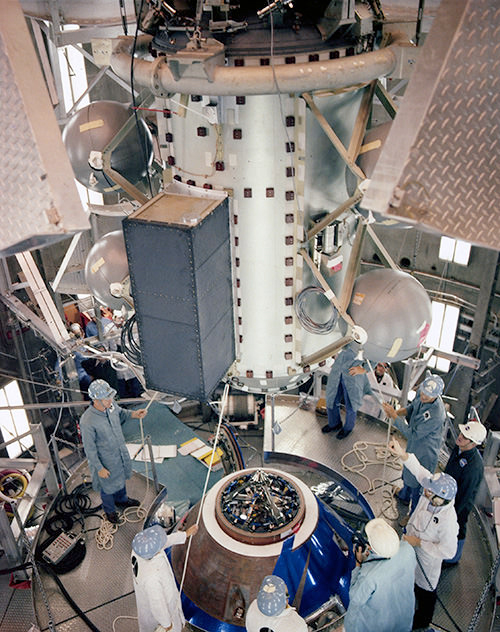 Workers conduct a docking test of the Docking Module with the Command Module at NASA’s Kennedy Space Center in Florida.
Workers conduct a docking test of the Docking Module with the Command Module at NASA’s Kennedy Space Center in Florida. 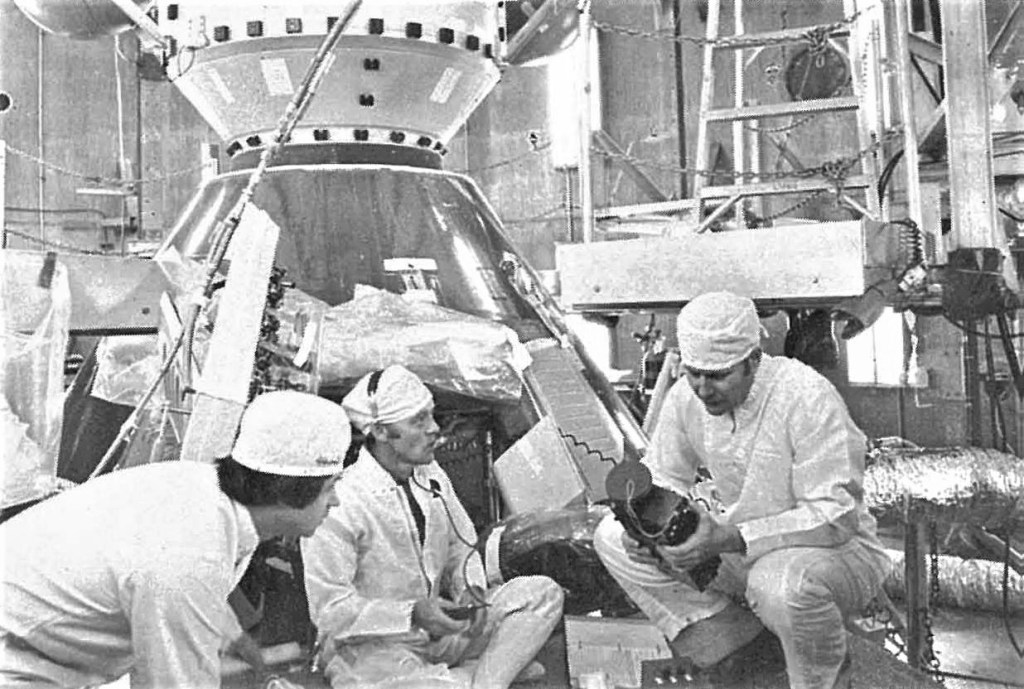 NASA support astronaut Robert Overmyer, right, works with engineers during compatibility testing. To be continued…
NASA support astronaut Robert Overmyer, right, works with engineers during compatibility testing. To be continued…
Major events around the world in January 1975:
January 5 – Musical The Wiz opens on Broadway, runs for 1,672 performances.
January 6 – The game show Wheel of Fortune debuts on NBC.
January 8 – Ella Grasso of Connecticut becomes the first elected female governor in the U.S.
January 11 – The S-II second stage of the Saturn V rocket that launched Skylab reenters the Earth’s atmosphere over the Indian Ocean.
January 12 – The Pittsburg Steelers beat the Minnesota Vikings in Super Bowl IX, played in Tulane Stadium in New Orleans.
January 15 – Space Mountain opens at Disney World in Orlando.
January 18 – The Jeffersons premieres on CBS.
January 22 – Launch of the Landsat-2 Earth resources monitoring satellite.
January 30 – Ernő Rubik applies for a patent in Hungary for his Magic Cube, later known as Rubik’s Cube.
Keep Exploring Discover More Topics From NASA Apollo-Soyuz Test Project



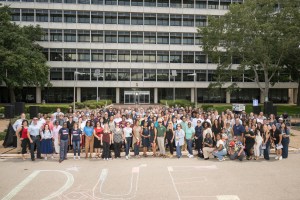 3 min read How It Started, How It’s Going: Johnson Space Center Edition Article 2 hours ago
3 min read How It Started, How It’s Going: Johnson Space Center Edition Article 2 hours ago 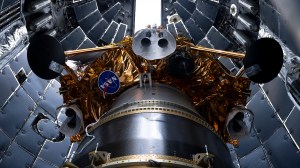 6 min read Ten NASA Science, Tech Instruments Flying to Moon on Firefly Lander Article 1 day ago
6 min read Ten NASA Science, Tech Instruments Flying to Moon on Firefly Lander Article 1 day ago 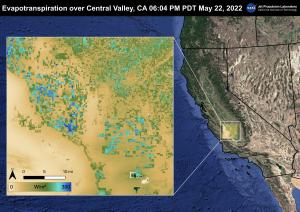 2 min read Station Science Top News: Jan. 10, 2025 Article 2 days ago
2 min read Station Science Top News: Jan. 10, 2025 Article 2 days ago 


